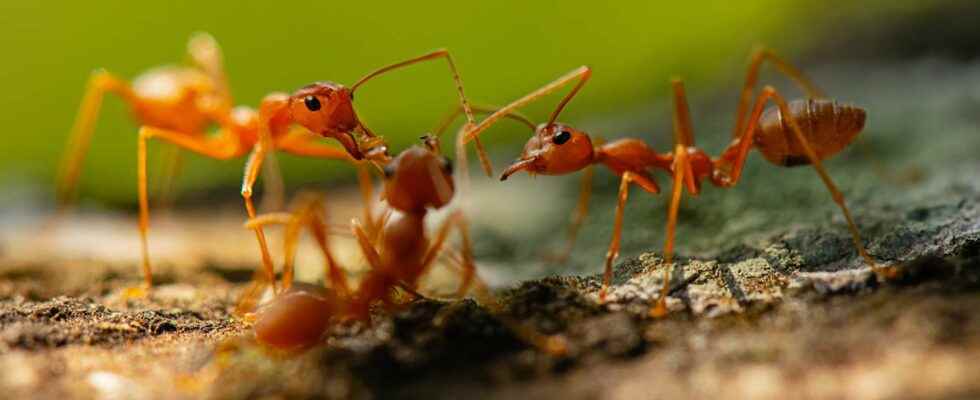“Beasts of science” is like a collection of stories. Beautiful stories that tell the living in all its freshness. But also in all its complexity. A parenthesis to marvel at the treasures of the world. For this new episode, let’s turn to a tiny beast: the fire ant.
You will also be interested
[EN VIDÉO] Don’t crush the ants anymore…they’re planting wildflowers! Did you know that ants were essential to the proper functioning of the ecosystem? Discover their talent as gardeners on video!
Ants, there are tens of thousands of themspecies. And they are present in practically all regions of the world. Some are less discreet than others. For some time there has been much talk of a certain Tapinoma magnum. A kind of “super ant” invasive plant that devastates crops and resists conventional treatments. In Africa ? In South America ? Not in French. In France. It started in Corsica. With the global warming, the little beast has attacked the continent. Around the Mediterranean first because these ants like the seaside, then in the South-West. They have now even reached the Pays de la Loire.
But the one we want to talk about today is one of her cousins. The one scientists have called Solenopsis invicta and which we call the fire ant. It is also invasive. Especially since she is aggressive. Imagine. It has taken to biting its prey with its powerful mandibles. Its objective is to cling to it in order to be able to sting the poor victims several times with its stinger, which resembles that of a wasp. Injecting them with one of the most irritating venoms in the world. A deadly venom for quite a few small animals.
The stage is set. However, what interests us here are the cognitive abilities of these ants. Capacities all the more surprising given that they only have around 250,000 neurons. Compared to our approximately 86 billion…
What happens when North America’s most venomous caterpillar tries to walk across a fire ant mound to access its host plant? Megalopyge opercularis is consumed by a mass of Solenopsis invicta. pic.twitter.com/zmdF0Zuvae
— Scott P. Egan (@scottpegan) November 7, 2019
A bridge over a dangerous surface
Despite this “disability”, fire ants show themselves capable of even feats that continue to elude us. While they live in very dense communities, they know, for example, how to avoid… the formation of traffic jams!
They also know how to form rafts of their bodies to escape the floods. In itself binder to each other in a very coordinated way. Each ant establishes in the operation a contact with not less than 14 of its neighbors.
All this, by adopting collective rather than individualistic strategies.
And here are the researchers observed another of the group techniques that these amazing ants have developed to circumvent the obstacles put in their way by nature. Or in this specific case, by the scientists caught up in their experiments. They have indeed placed between our fire ants and a few pieces of sausage, a sticky surface. To venture there would have been suicidal. The small animals would indeed have risked finding themselves trapped there.
Another remarkable example of tool use in ants: fire ants “paving” sticky surfaces. I’ve seen signs of this behavior, but I didn’t expect it to be so robust until my friend told me about it (Wang et al., 2021 Insect Science). pic.twitter.com/BaHBmlgtXM
— Horace Zeng (@horacezhl) March 14, 2022
But the fire ants had the parade. They used debris found around — here, pieces of glass made available to them, in nature, it could just as well be pieces of leaves, branches, etc. — for build like a bridge. Coming to cover the sticky surface.
Here is a worker ant “paving” in real-time (I put a white circle around her); you can see her picking up the gravel, carrying it to the tape, putting it down, & doing it again. pic.twitter.com/zEIEBMmpT1
— Horace Zeng (@horacezhl) March 15, 2022
The researchers observed the same game when it came to these little beasts crossing a surface coated with a powerful ant repellent. Some debris moved as a group and voila. Showing once again that fire ants aren’t so dumb!
And pointing out in passing a role that these insects play in a process that scientists know as bioturbation. A process of rearranging the elements contained in soils. Improving water permeability, but also the fertility of the layer arable.
Interested in what you just read?
